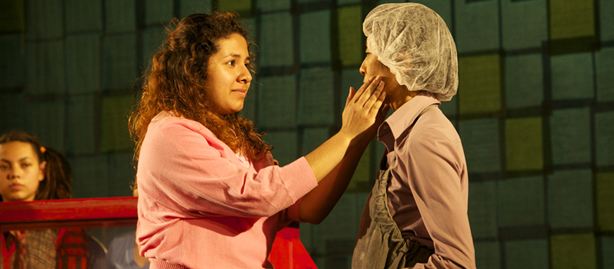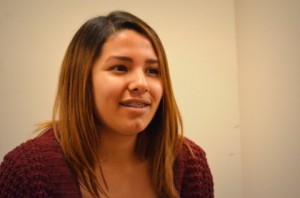The
past couple of weeks have been crazy. In three weeks, we’ve had tech for two
shows and opened two shows. I’ve never done tech back to back like that before.
At the Oregon Shakespeare Festival, we normally don’t work on two shows that open back to
back. At Milwaukee Rep, as soon as we got into Noises Off tech, we were building, setting, and
styling wigs and facial hair for A Christmas Carol and went into tech the next
week. I don’t know how Lara (the wig master) does all of this stuff by herself
normally. She’s amazing. It was a really good experience to work on two shows
at the same time. I definitely got quicker at setting wigs. Lara and I got on a
roll with the Christmas Carol wigs, and finished everything with a little time
to spare. I set and styled most of the men’s wigs for Christmas Carol. I
learned a couple different types of sets for men’s wigs, including a pin curl
set. It was a lot of fun to figure out which sets created which styles from the
research pictures. This
is a picture of a men’s wig in a set that I did.
As
always the weather was ridiculously cold. There was one day where it got down
to 7 degrees and below 0 degrees with the wind chill… Needless to say I stayed indoors
as much as possible during that time. One morning I walked to work when it was 19 degrees outside, and people were lined up on the streets
waiting for a parade to start. It was 8:30 am and the parade didn’t start until
10:00am. My legs were numb by the time I got to work, and there were people
sitting outside like it was 70 degrees and sunny. I will never understand how
people can sit outside in that cold, but more power to them. On one day, I was able to go
outside in just a T-shirt for about 5 minutes. I was super proud of
myself and of course had to take a picture to document the moment. It may have
been about 40 degrees, but still for a Texan that’s pretty good. :)
Despite the cold, this city is really beautiful. I love the architecture of the buildings. It snowed for a few days last week and it was really pretty. Milwaukee has a bunch of Christmas lights already set up, so the snow with the lights made the city that much more beautiful. They also have a Christmas tree set up in what I’m guessing is their Times Square.
One of my adventures over the past couple of weeks involved going to a place called Comet Cafe with a few people I work with in the costume shop. The Cafe apparently serves baskets of bacon on Sunday afternoons. I didn’t get to experience this, but the idea is pretty awesome if I do say so myself. I got an omelet that was pretty spectacular. They also serve coffee that tastes similar to Noble coffee (a small coffee shop in Ashland), so it was a little taste of home. Ill definitely be going back again before I leave Milwaukee.
I
only have two more weeks left in my program, and am super excited to see what
else I can learn in that time. Over the past four weeks I’ve learned so much
and feel as though I’ve gotten more comfortable and confident in my
skills as a wig artist. I’m excited to get back to OSF and apply everything
I’ve learned and practiced while here in Milwaukee. I’ll be sad to
leave all the amazing people and friends I’ve made here though.





































